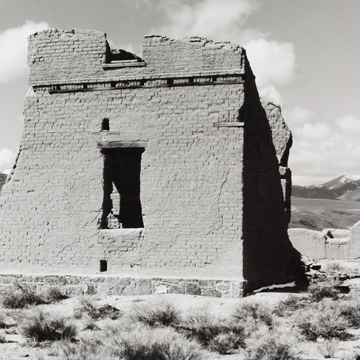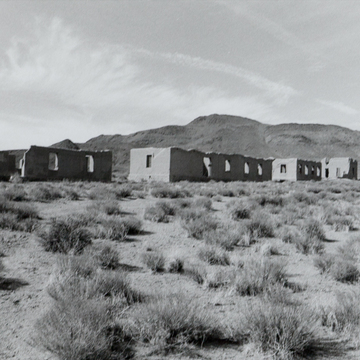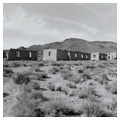With the largest collection of adobe ruins in the state, Fort Churchill stands as a reminder of the early federal presence in Nevada, dating back to territorial days. The fort was built in the summer of 1860, shortly after the Pyramid Lake War. Fearing Native American attacks, the army stationed the soldiers of the Carson River expedition at the fort to protect the newly discovered mines of the Comstock Lode, as well as the Pony Express, settlers, and emigrants traveling through the area.
Soldiers and civilians built the fort near the site where the Overland Trail crossed the Carson River. The buildings were made of adobe brick covered with layers of adobe mud, built on stone foundations and topped by gable or hipped roofs. The officers' quarters, barracks, stables, shops, a laundry, hospital, and bakery were arranged in a large square surrounding a central parade ground. When the army abandoned the fort in 1869, Samuel Buckland, a local rancher, purchased the site and its structures. The fort quickly deteriorated into ruins as Buckland salvaged building materials.
After conducting historical and archaeological investigations, in the early 1930s the National Park Service (NPS) supervised the reconstruction of several adobe buildings at the site, using labor furnished by the Civilian Conservation Corps (CCC). The CCC also built the nearby visitor center and park headquarters at this time. Much of what can be seen today at Fort Churchill is the work of the CCC and later reconstruction efforts under the Nevada Division of State Parks, which acquired the site in 1957. Although partly filtered through the lens of the 1930s, the reconstruction and the ruins of the old fort evoke the era of Nevada's early settlement.























